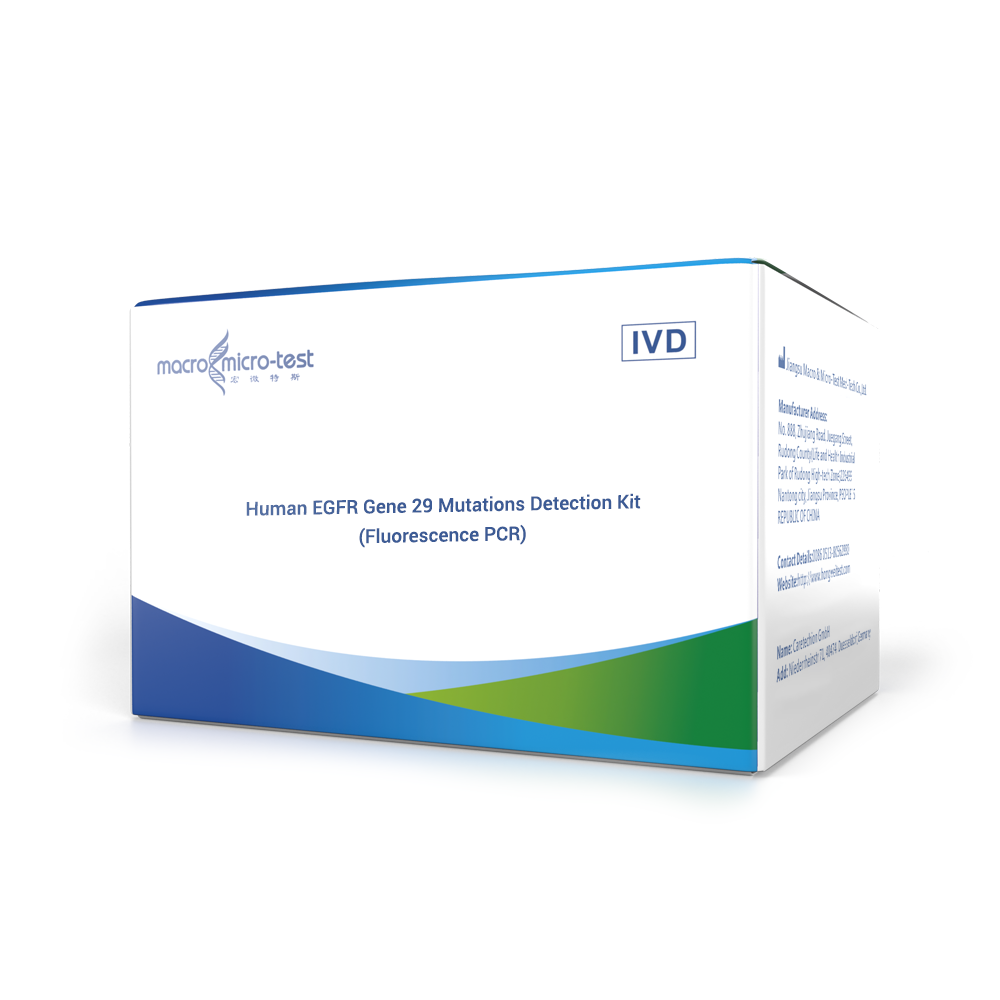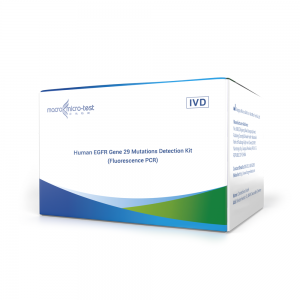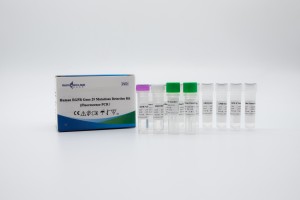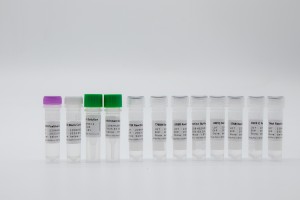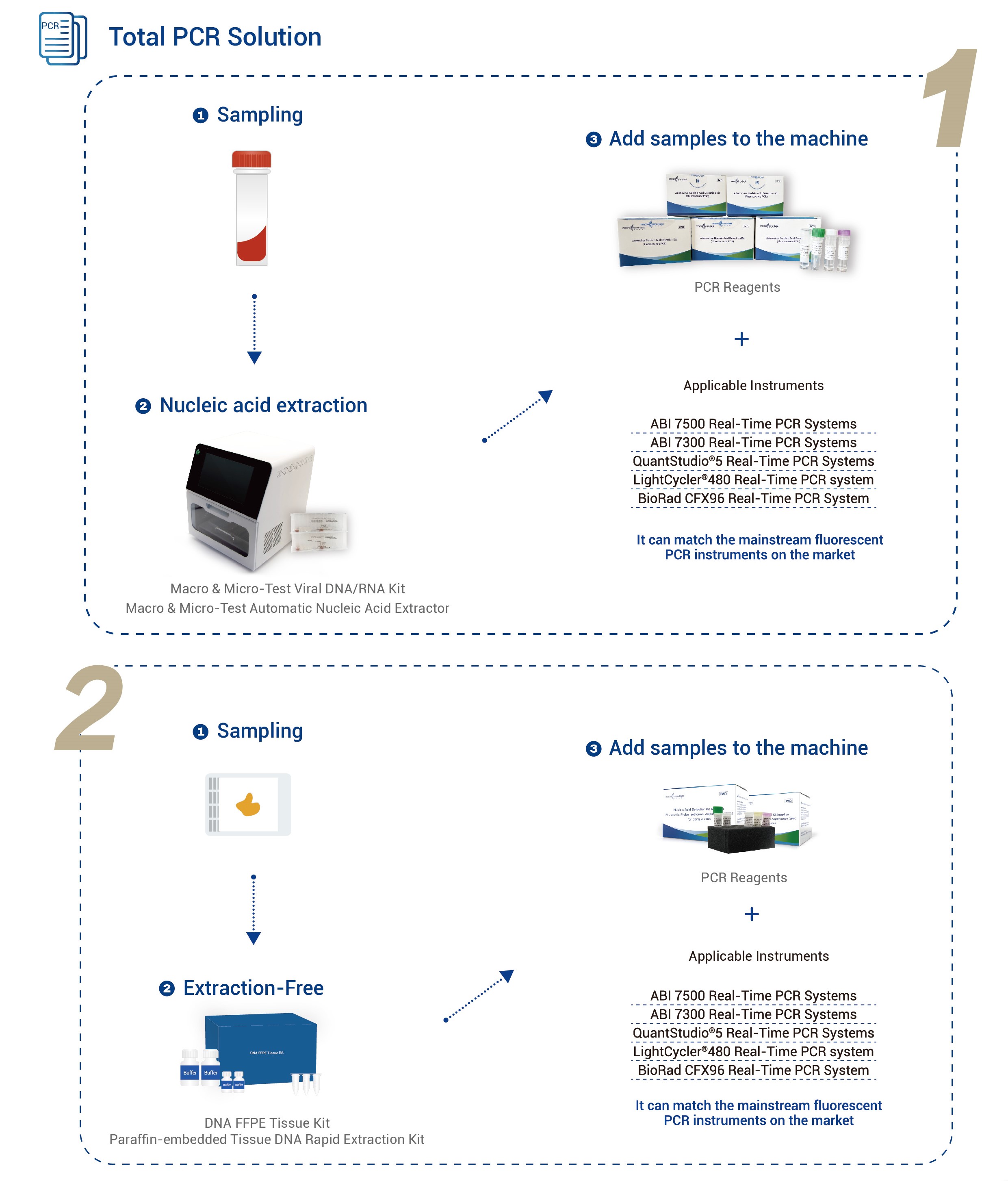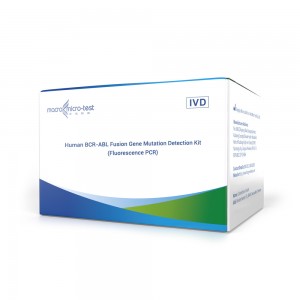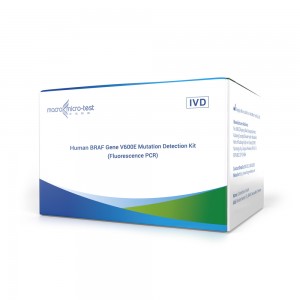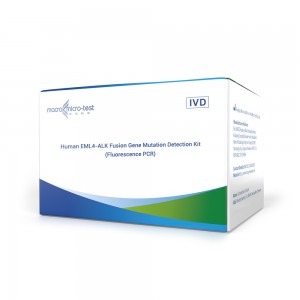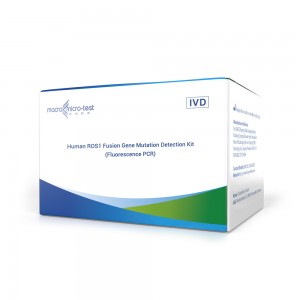Eniyan EGFR Gene 29 Awọn iyipada
Orukọ ọja
HWTS-TM0012A-Eniyan EGFR Gene 29 Ohun elo Iwari Awọn iyipada (Fluorescence PCR)
Arun-arun
Akàn ẹdọfóró ti di asiwaju idi ti awọn iku akàn ni agbaye, ti o n ṣe ewu ilera eniyan ni pataki. Awọn akàn ẹdọfóró sẹẹli ti kii ṣe kekere jẹ iroyin fun iwọn 80% ti awọn alaisan akàn ẹdọfóró. Lọwọlọwọ EGFR jẹ ibi-afẹde molikula pataki julọ fun itọju ti akàn ẹdọfóró sẹẹli ti kii ṣe kekere. Awọn phosphorylation ti EGFR le se igbelaruge tumo cell idagbasoke, iyato, ayabo, metastasis, egboogi-apoptosis, ati igbelaruge tumo angiogenesis. EGFR tyrosine kinase inhibitors (TKI) le dènà ipa ọna ifihan EGFR nipasẹ didaduro EGFR autophosphorylation, nitorina ni idinamọ ilọsiwaju ati iyatọ ti awọn sẹẹli tumo, igbega apoptosis sẹẹli tumo, idinku angiogenesis tumo, ati bẹbẹ lọ, ki o le ṣe aṣeyọri itọju ailera ti tumo. Nọmba nla ti awọn ijinlẹ ti fihan pe ipa itọju ailera ti EGFR-TKI ni ibatan pẹkipẹki si ipo ti iyipada jiini EGFR, ati pe o le ṣe idiwọ idagbasoke ti awọn sẹẹli tumo pẹlu iyipada jiini EGFR. Jiini EGFR wa ni apa kukuru ti chromosome 7 (7p12), pẹlu ipari kikun ti 200Kb ati pe o ni awọn exons 28. Ekun iyipada wa ni pataki ni exons 18 si 21, codons 746 si 753 iyipada piparẹ lori exon 19 iroyin fun nipa 45% ati L858R iyipada on exon 21 iroyin fun nipa 40% si 45%. Awọn Itọsọna NCCN fun Ayẹwo ati Itọju Akàn Ẹdọfóró Ẹdọfóró ti kii-Kekere sọ kedere pe idanwo jiini EGFR ni a nilo ṣaaju iṣakoso EGFR-TKI. Ohun elo idanwo yii ni a lo lati ṣe itọsọna iṣakoso ti awọn oogun tyrosine kinase inhibitor olugba idagba epidermal (EGFR-TKI), ati pese ipilẹ fun oogun ti ara ẹni fun awọn alaisan ti o ni akàn ẹdọfóró sẹẹli ti kii-kekere. Ohun elo yii nikan ni a lo fun wiwa awọn iyipada ti o wọpọ ninu jiini EGFR ni awọn alaisan ti o ni akàn ẹdọfóró sẹẹli ti kii ṣe kekere. Awọn abajade idanwo wa fun itọkasi ile-iwosan nikan ati pe ko yẹ ki o lo bi ipilẹ-ẹri fun itọju ẹni-kọọkan ti awọn alaisan. Awọn oniwosan ile-iwosan yẹ ki o gbero ipo alaisan, awọn itọkasi oogun, ati itọju Idahun ati awọn itọkasi idanwo yàrá miiran ati awọn ifosiwewe miiran ni a lo lati ṣe idajọ awọn abajade idanwo ni kikun.
ikanni
| FAM | IC Reaction Buffer, L858R Reaction Buffer, 19del Reaction Buffer, T790M Reaction Buffer, G719X Reaction Buffer, 3Ins20 Reaction Buffer, L861Q Reaction Buffer, S768I Reaction Buffer |
Imọ paramita
| Ibi ipamọ | Omi: ≤-18℃ Ninu okunkun; Lyophilized: ≤30℃ Ninu okunkun |
| Selifu-aye | Omi: 9 osu; Lyophilized: 12 osu |
| Apeere Iru | àsopọ tumo tuntun, apakan pathological tio tutunini, àsopọ pathological ti a fi sinu paraffin tabi apakan, pilasima tabi omi ara |
| CV | 5.0% |
| LoD | Wiwa ojutu ifaseyin acid nucleic labẹ abẹlẹ ti 3ng/μL iru egan, le rii iduroṣinṣin 1% oṣuwọn iyipada |
| Ni pato | Ko si ifaseyin-agbelebu pẹlu DNA genomic eniyan iru-egan ati awọn iru mutant miiran |
| Awọn ohun elo ti o wulo | Applied Biosystems 7500 Real-Time PCR SystemsApplied Biosystems 7300 Real-Time PCR Systems QuantStudio® 5 Real-Time PCR Systems LightCycler® 480 Real-Time PCR eto BioRad CFX96 Real-Time PCR System |

